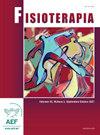Prevalencia de dolor en escaladores: resultados del estudio exploratorio CLIMB-PAIN
Q4 Health Professions
引用次数: 0
Abstract
Objectives
To assess the prevalence of pain in climbers, analyzing its distribution by sex, the most common pain locations, the relationship with anthropometric and sport-related factors, and its impact on daily activities.
Methods
A preliminary prevalence study was conducted between February and September 2023, in which 271 climbers completed a self-administered digital questionnaire. Participants who spent more hours on other sports than on climbing, as well as minors, were excluded.
Results
The prevalence of pain was 42.6%. The hand was the most affected area, with 24.7% of cases; however, in men, the fingers of the hand were the most prevalent (27.6%), while in women, the shoulder was the most affected region (23.5%). Statistically significant relationships were found between the presence of pain and age (p = 0.038) and climbing experience (P = .002).
Conclusions
Pain in climbers is highly prevalent, with the hand being the most affected area overall, although shoulder pain is more prevalent in women. Pain is significantly related to age and the duration of climbing practice. Pain intensity is moderate, and the most common duration exceeds 12 months. Mood was the most affected aspect by pain. Additionally, pain tends to increase after climbing, with the lowest intensity reported before the activity.
攀岩者疼痛流行率:CLIMB-PAIN探索性研究结果
目的评估攀岩者疼痛的患病率,分析其性别分布、最常见疼痛部位、与人体测量和运动相关因素的关系以及对日常活动的影响。方法于2023年2月至9月对271名登山者进行了初步患病率研究,其中271名登山者完成了一份自我管理的数字问卷。那些花在其他运动上的时间多于攀岩的参与者,以及未成年人,都被排除在外。结果疼痛发生率为42.6%。手部是感染最多的部位,占24.7%;然而,在男性中,手指是最常见的(27.6%),而在女性中,肩膀是最受影响的区域(23.5%)。疼痛的存在与年龄(p = 0.038)和攀岩经验(p = 0.002)有统计学意义的关系。结论西班牙在登山者中非常普遍,手是最受影响的区域,尽管肩关节疼痛在女性中更为普遍。疼痛与年龄和攀岩练习时间有显著关系。疼痛强度中等,最常见的持续时间超过12个月。情绪是受疼痛影响最大的方面。此外,攀登后疼痛倾向于增加,活动前报告的强度最低。
本文章由计算机程序翻译,如有差异,请以英文原文为准。
求助全文
约1分钟内获得全文
求助全文
来源期刊

Fisioterapia
Health Professions-Physical Therapy, Sports Therapy and Rehabilitation
CiteScore
0.50
自引率
0.00%
发文量
37
期刊介绍:
Publicación Oficial de la Sociedad Española de Fisioterapeutas. Sus páginas ofrecen desde artículos originales hasta revisiones, pasando por el estudio de casos o los actos más importantes relacionados con la especialidad.
 求助内容:
求助内容: 应助结果提醒方式:
应助结果提醒方式:


